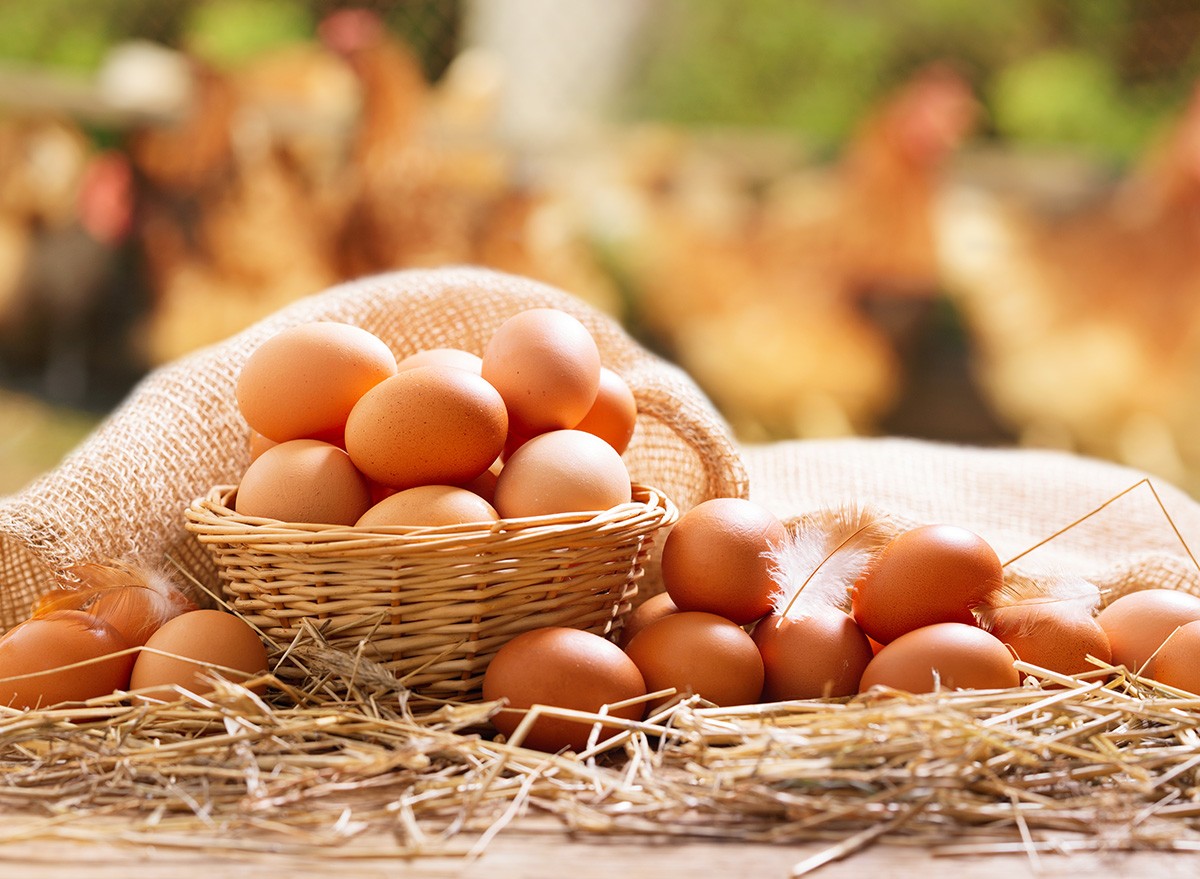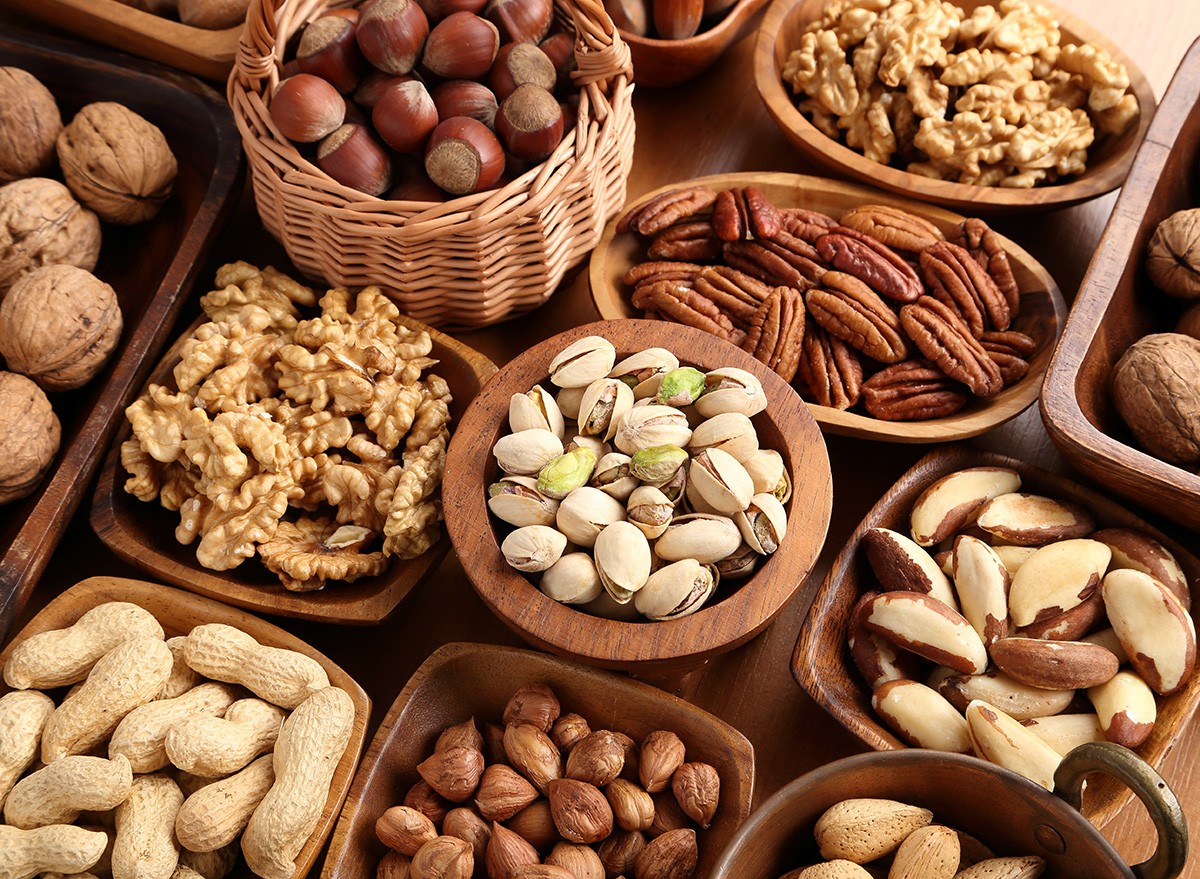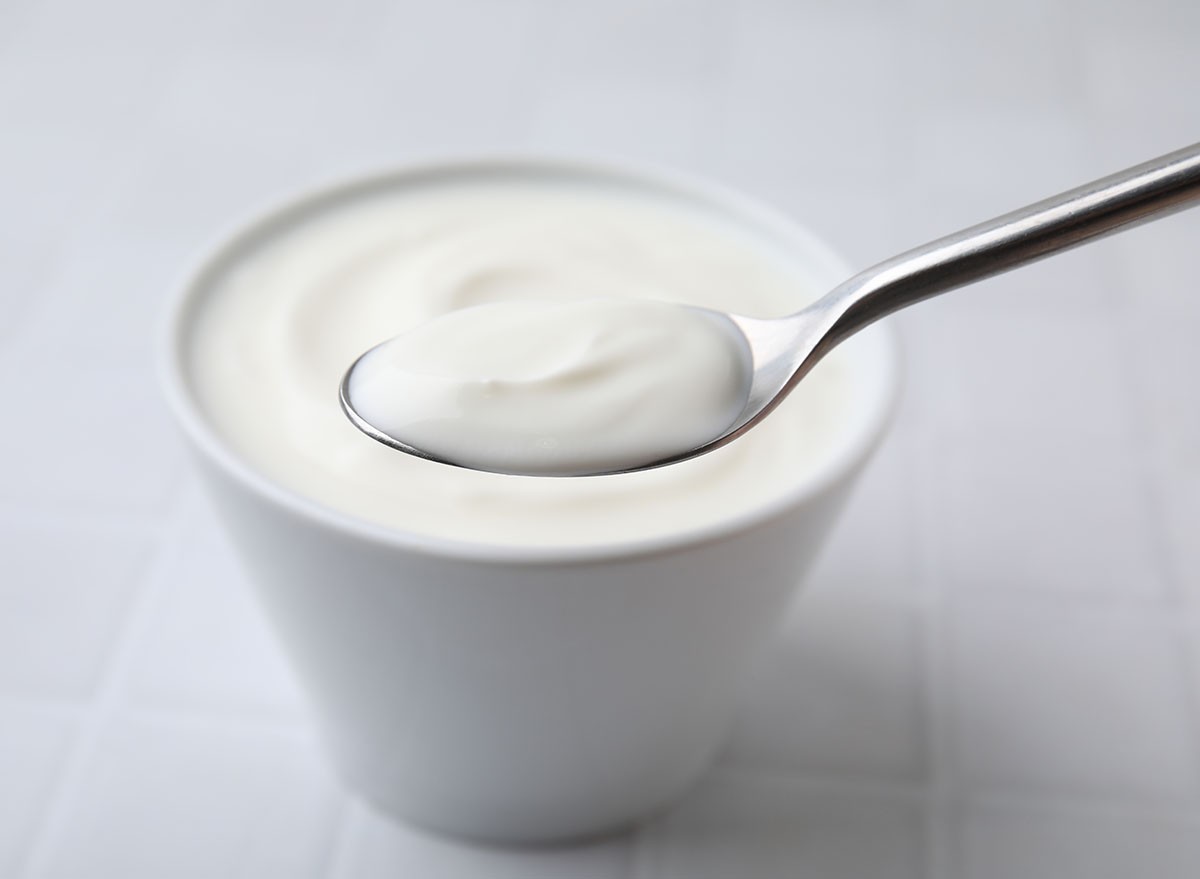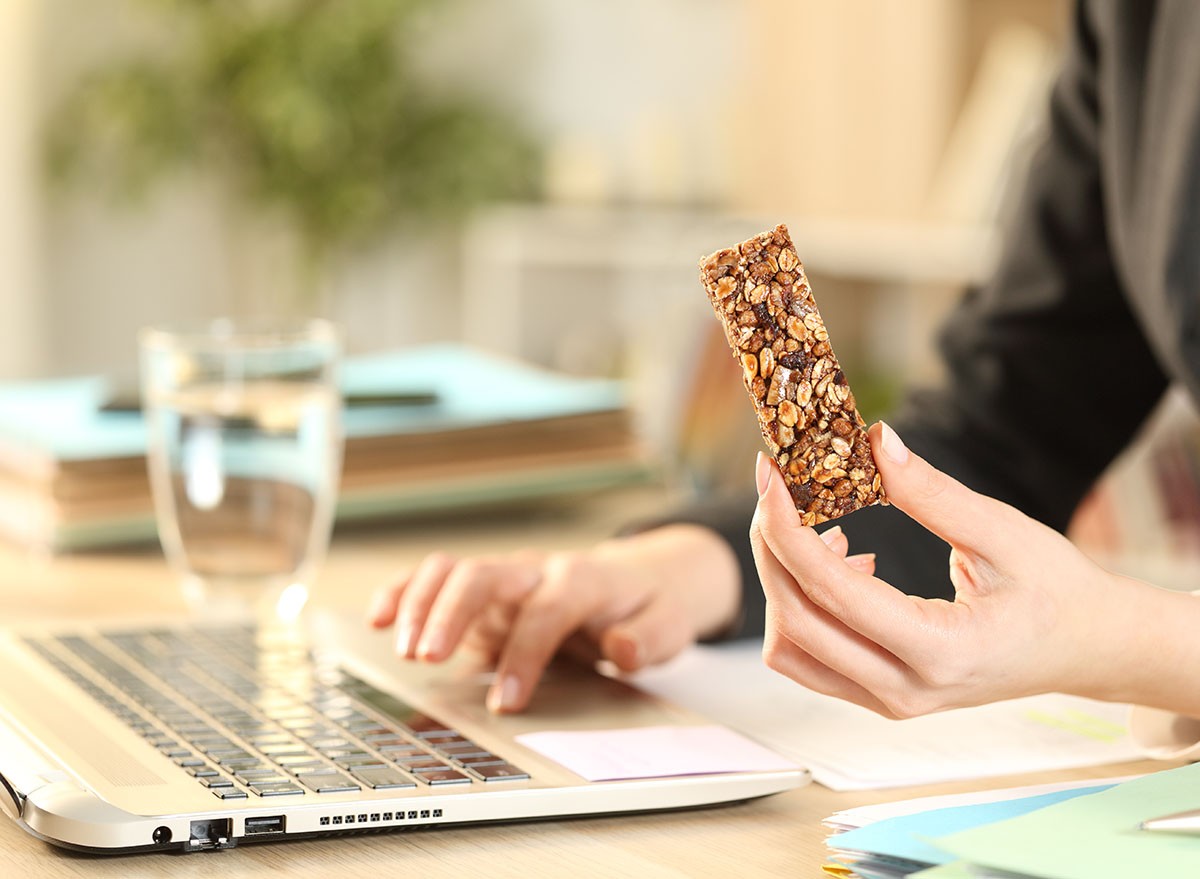5 Foods You Think Are High Protein…But Aren't

Are you eating healthy and amping up your protein intake but still can't lose weight? One expert points out that you might think you are eating high-protein foods when you actually aren't. Keith Ozment is a fitness and weight loss coach specializing in helping people over 30 "repair metabolism, build muscle & burn fat!" he writes in his Instagram bio. In a new post he goes over "protein math" and reveals 5 foods you think are high protein but actually aren't.
"First… let's clarify what the baseline is for something to be considered high protein. Let's learn protein math! High protein means there are around 10g of protein for every 100 calories. For example: If the food you are eating has 19-20g of protein and around 200 calories, that's a winner!" he says. Here are 5 foods that often get labeled as high protein, but actually aren't.
Peanut Butter
"Peanut butter is my weakness but l'm sorry to say that it is a fat bomb that happens to have a little bit of protein," Ozment reveals. "A serving of pb is about 190 calories with only 7g of protein. Truly measure out a serving of peanut butter. It's very depressing."
Eggs

Most people think eggs are a good source of protein, but they aren't. "On the surface, eggs are essentially high protein. The problem is when people ONLY eat 2 eggs for breakfast. 2 large eggs are only 12g of protein. You need about 20g more to make a solid breakfast," he says. "Add liquid egg whites or have some turkey sausage along with those 2 eggs to get the total protein up to a minimum of 30 grams."
Nuts

Nuts "of any kind," aren't a good source of protein. "Just like the peanut butter, basically any kind of nut will be a fat serving that happens to have some protein. Nuts are great. Amazing vitamins and minerals, some fiber, healthy fats…just watch the portion sizes and DONT use them as your protein source," Ozment explains.
Regular Yogurt

Regular yogurt is not going to cut it for protein. "I'm not talking non fat Greek yogurt…l mean regular, plain old yogurt," Ozemet says. "A serving of Dannon strawberry yogurt is 160 calories with 5g of protein. Compare that to strawberry Oikos Triple Zero Greek yogurt at 90 calories with 15g of protein. No comparison!"
Protein bars

"Protein bars can be super convenient to get in some protein but most don't have the best protein to calorie ratio," says Ozment. "Be sure it passes the protein math that I mentioned at the beginning of this post!" And if you enjoyed this article, don't miss these 8 High-Protein Foods with Nearly Zero Calories That Melt Fat.




